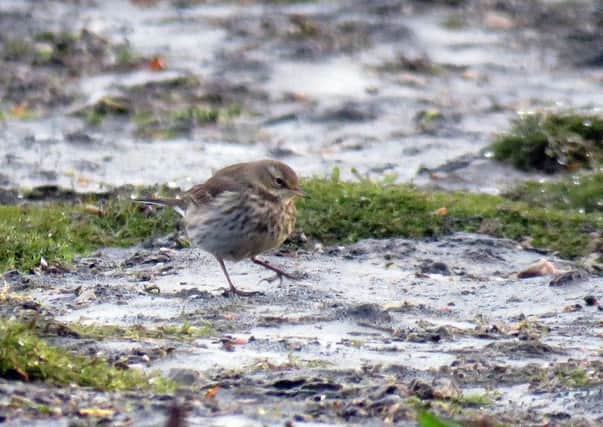Birdwatch: Winter visitors can be seen on the local sewage filter beds


But some interesting birds can be found there in winter, in particular water pipits.
Up to six of these winter visitors from the mountainsides of central Europe have been on the filter beds at the Lemonroyd treatment works, Leeds.
Advertisement
Hide AdAdvertisement
Hide AdTo us it would seem a strange choice to make but perhaps the water pipits mistake the jets gushing from the rotary arms for the rushing mountain streams of their summer home while insects are readily available for them to feed on even in freezing weather.
In winter, water pipits are similar to meadow and rock pipits both of which are resident here but is somewhat paler with olive brown upper parts and a streaky breast.
The most distinctive feature is a bold white stripe above the eye which the other two species lack.
In summer, the streaky breast turns an attractive silvery pink but sometimes, just before water pipits leave us in March and April, there is a chance for British birders to see at least some of this transformation.
Advertisement
Hide AdAdvertisement
Hide AdOnce back in the mountains the water pipits settle in open areas with short grass along with bushes and trees which they can use as lookout posts and also rocky cavities in which they can nest.
When autumn comes some of them move only as far as the valley floors while others spread all across the lowlands of Europe as far north as Scotland. Those that reach here have the unusual distinction of being one of the few birds spending the winter further north than where they have summered.
Sewage filter beds can also attract overwintering waders with two green sandpipers reported at Lemonroyd and another two on the sewage farm at Wilthorpe Marsh, South Yorkshire.
Chiffchaffs are also attracted to filter beds by the availability of insects and there is always the chance of one or more of these turning out to be a Siberian chiffchaff.
Advertisement
Hide AdAdvertisement
Hide AdOne of these has been present on the Potteric Carr reserve, Doncaster while a ‘possible’ was seen from the Singleton hide at Blacktoft Sands.
Large numbers of waxwings have been arriving in Yorkshire this week as flocks move south from Scotland and this winter is turning into the best for three years to see these beautiful birds. Sightings have included 400 in Sheffield and flocks of 200 plus in several other places.
Birdwatchers are being asked to look out for any colour ringed birds, especially on the many photographs taken of flocks over the past week or so – one with yellow and blue rings on its left leg was seen in a flock at Guiseley at the weekend.
More than 300 have been ringed in Aberdeenshire this winter and sightings should be reported to grampianringing.blogspot.com or to Raymond Duncan via email.
Geese have also been arriving in the region with 71 white-fronted and three tundra bean geese on Natural England’s Lower Derwent Valley reserve.